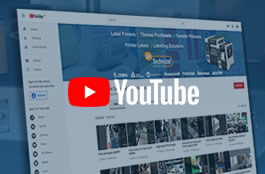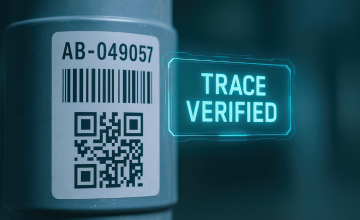Why Is Barcode Verification So Important?

Why Is Barcode Verification So Important?
In today’s fast-moving supply chains, accuracy and compliance are everything. A single unreadable barcode can cause costly delays, rejected shipments, or even compliance failures - especially in industries such as pharmaceuticals, aerospace, and manufacturing.
Barcode verification is the process of measuring and grading printed barcodes so they meet global quality standards such as ISO/IEC 15415 & ISO/IEC 15416.
A verifier doesn’t just tell you if a barcode can be read - it analyses aspects like contrast, edge definition, quiet zones, and print consistency, assigning a grade. This ensures your barcodes are compliant before they leave your facility.
Why Verification Matters
- Prevents Costly Rejections: Suppliers who fail to meet barcode quality requirements can face shipment rejections or penalties.
- Ensures Traceability: In regulated industries, high-quality barcodes ensure data integrity and full traceability from production to delivery.
- Protects Brand Reputation: Reliable barcodes show professionalism and reliability to your partners and customers.
- Reduces Rework & Waste: Catching printing issues early avoids wasted labels, reprints, and downtime.
- Supports Compliance: Many sectors - including aerospace, automotive, and pharma - require documented proof of barcode grading and verification.
Offline Verification with the Omron LVS-9510
The Omron LVS-9510 is a desktop (offline) barcode verifier designed for detailed, high-resolution analysis of printed labels.
Key features include:
- Full ISO grading for 1D and 2D barcodes
- High-resolution camera for accurate, repeatable verification
- Offline verification – ideal for label design checks and print sample testing
- Comprehensive reporting for audit and compliance documentation
Perfect for quality control departments and production areas where barcodes need to be tested before labels go into full-scale use, the LVS-9510 provides traceable and repeatable results you can rely on.
Portable Verification with the Omron LVS-9580
For on-the-floor flexibility, the Omron LVS-9580 handheld verifier offers the same ISO-compliant verification capabilities - but in a portable form.
Highlights include:
- Handheld design – ideal for in-line checks and mobile use
- High-performance optics for accurate grading even on curved or difficult surfaces
- USB connectivity for easy data transfer and reporting
- Compliance with ISO/IEC standards for both 1D and 2D codes
The LVS-9580 allows operators to perform verification directly at the production line, ensuring that every batch meets quality standards before shipment.
Verification vs Scanning: What's the Difference?
| Feature | Scanner | Verifier |
|---|---|---|
| Purpose | Reads barcode data | Measures barcode quality |
| Output | Decodes and transmits information | Assigns a grade |
| Standards | None | ISO/IEC 15415 / 15416 / GS1 |
| Use Case | Day-to-day operations | Quality control & compliance |
| Outcome | Confirms barcode readability | Guarantees barcode compliance |
Simply put: a scanner tells you if a barcode works - a verifier tells you why it works (or doesn’t).
Who Needs Barcode Verification?
Barcode verification is critical in industries where accuracy, traceability, and compliance are non-negotiable:
- Pharmaceutical & Medical – meeting MHRA and GS1 compliance requirements
- Aerospace & Defence – ensuring traceable parts and supplier compliance
- Food & Beverage – preventing mislabelling and recall risks
- Manufacturing & Logistics – maintaining process efficiency and reducing returns
The Bottom Line
Barcode verification is not just a quality control measure - it’s a safeguard for your entire supply chain. By integrating offline or handheld verification, you can ensure every barcode that leaves your facility is compliant, traceable, and reliable.
At BHT Services, we supply and support a range of Omron LVS barcode verification systems, including the LVS-9510 and LVS-9580, along with expert advice on implementation and compliance.











